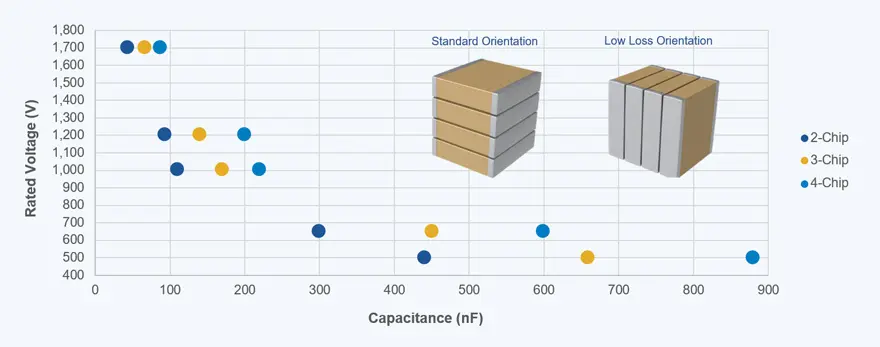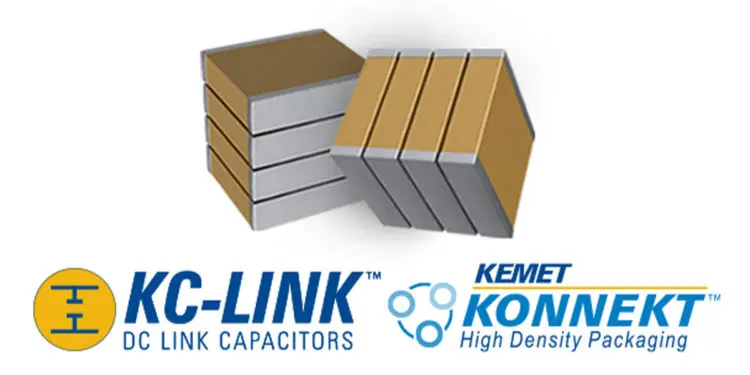KEMET Corporation a leading global supplier of electronic components, continues to strengthen its power conversion solutions by extending its popular MLCC C0G capacitors KC-LINK range using KONNEKT high-density packaging technology to meet the growing demand for fast-switching wide bandgap (WBG) semiconductors, EV/HEV, LLC resonant converters, and wireless charging applications.
This technology combines KC-LINK’s robust and proprietary C0G Base Metal Electrode (BME) dielectric system with KONNEKT’s innovative Transient Liquid Phase Sintering (TLPS) material to create a surface mount multi-chip solution well-suited for both high-density packaging and high-efficiency applications, producing up to four times the capacitance compared to a single multi-layer ceramic capacitor.
High mechanical robustness allows KC-LINK capacitors with KONNEKT to be mounted without the use of lead frames. This design provides extremely low effective series inductance (ESL), increasing the operating frequency range and allowing for further miniaturization. Available in commercial grade with tin termination finish, this series is Pb-Free, RoHS and REACH compliant. Capacitors utilizing KONNEKT technology have the unique ability to be mounted in a low-loss orientation to increase their power handling capability further.
Combining KEMET’s revolutionary Class 1 C0G dielectric system with KONNEKT technology offers a low-loss, low-inductance package capable of handling extremely high ripple currents with no change in capacitance versus DC voltage and negligible change in capacitance versus temperature. Designed for an operating temperature range up to 150°C, the capacitor can be mounted close to fast switching semiconductors in high power density applications, which require minimal cooling. These components are positioned for growth within the DC/DC converter market in aerospace, medical and automotive applications. According to Business Insider*, the global DC-DC converter market is expected to grow at a CAGR of 17.5% from 2019 to 2025 and reach USD 22.4 billion by 2025.
“The low ESR of KC-LINK capacitors results in best-in-class ripple current capability,” said Dr. John Bultitude, KEMET Vice President and Technical Fellow. “Combined with KONNEKT technology, this solution delivers thermal stability and mechanical robustness through increased efficiency by combining multiple capacitors into a single high density, ultra-low loss package.”

KEMET’s KC-LINK range with KONNEKT technology is available immediately via KEMET distributors. To learn more about KC-LINK with KONNEKT technology capabilities and applications, visit kemet.com/konnekt
*Source: DC-DC Converter Market by Vertical, Form Factor, Product Type, Output Power, Input Voltage, Output Voltage, Sales Channel, Output Number and Region – Forecast to 2025, Business Insider, November 2019































